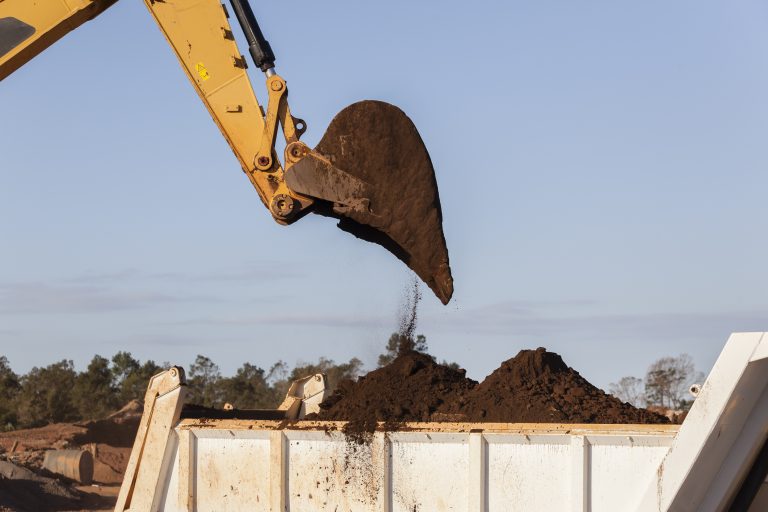Hitachi Construction Machinery: Fleet Management and Administration Made Easy
Explore how Hitachi Construction Machinery’s ConSite automatically monitors its fleet of connected machines and generates valuable data-driven insights, making life much easier for machinery suppliers, operators and end-users.
Inside Hitachi Construction Machinery: Fleet Management and Administration Made Easy
Highlights
- HCM’s Global e-Service monitors performance and minimizes downtime time for 300,000 of its heavy machines across 140 countries.
- The innovative web-based system, ConSite is connected by Telenor Connexion and it enables dealers and construction teams to keep close track on their fleets.
- Learn how managed connectivity enables this service to automatically monitor HCM’s fleet of connected machines and generates valuable data-driven insights, making life much easier for machinery suppliers, operators and end-users.
- Bringing new efficiencies to global remote fleet management and administration with Hitachi Construction Machinery (HCM) through Telenor Connexion’s global managed connectivity.
- How the HCM partnership with Telenor Connexion partnered has connected its global fleet of heavyweight machinery.
Background
Modern construction equipment is much more than huge machines moving masses of earth. Hitachi Construction Machinery (HCM), Japan’s second largest and the world’s third-largest manufacturer in the market, creates remarkably high-value, heavy machinery for the construction, mining, and forestry industries.
HCM’s Global e-Service monitors performance and minimizes downtime time for 300,000 of its heavy machines across 140 countries. The innovative web-based system, connected by Telenor Connexion, enables dealers and construction teams to keep close track on their fleets. The service automatically monitors its fleet of connected machines and generates valuable data-driven insights, making life much easier for machinery suppliers, operators and end-users.
An early M2M/IoT adaptor
Early on—well before the concept of machine-to-machine (M2M) connectivity was widely used— HCM was looking at ways to help their customers to gain the maximum value from their machines throughout their lifetime. They were exploring ways to ensure that the machinery could be operated at peak efficiency, which would mean not only excellent maintenance and service an ongoing flow of information about the equipment, the way it was being used and the current state of systems within it.
From 2009, making that all possible was an agreement with Telenor Connexion that created a global network of HCM equipment, all linked by 2G/3G (GSM) SIMs embedded in M2M modules within the machines and linked to a number of sensors. Telenor Connexion provided not only its interconnection know-how but also the Application Programming Interfaces (APIs) to simplify the process of linking those sensors into the communication modules. That ensured that the data needed could be collected and transmitted for analysis—and action when needed.
HCM had been actively investigating the possibilities of M2M as early as the late 1990s. Many of their customers were operating in harsh, remote locations; this made it difficult to gather equipment operation information and to know when it was time to provide service. By 2000, the company had begun applying M2M in its Japanese operations, and soon realized how much applying this technology could benefit customers as well as themselves.

Going global in interconnectivity
Applying M2M internationally, however, brought unique challenges. At first, HCM investigated satellite-based connectivity, but quickly found the limitations of this solution. For example, some countries have severe restrictions on the use of satellite communications within their borders. Satellite coverage is also optimal the closer the equipment is operated to the equator; the closer the location moves to the poles, the more problematic satellite coverage becomes. Because the company wanted to introduce connectivity to all its machines operating in over 100 countries, HCM required to find a more efficient solution.
By 2007, HCM was looking at other options. They knew they needed to find a connectivity partner with asset management experience; one that could provide a flexible business model based on building a long-term relationship; and one that could provide reliable connectivity in widely varying parts of the world. The solution had to address the unique operations related to heavy machinery, and the services that this equipment requires. Finally, they were searching for simplicity—they were seeking one single global connectivity provider, one who could provide a streamlined connectivity solution that reduced complexity while providing connectivity for the entire supply chain through the machine mounted SIM and M2M modules.
A leader seeks its equal in connectivity
HCM prides itself on being an expert in the design, construction and support of complex construction equipment. The partner they were seeking would need to have the same level of expertise in providing global connectivity, and the same dedication to providing world-class service.
Today, Telenor Connexion is the sole communications provider for HCM, and is able to make use of its extensive roaming partnerships to provide a single source of connectivity for the manufacturer. Telenor Connexion’s Service Level Agreements (SLAs) in turn allow HCM to offer its customers a higher, more secure level of service that ensures robust security and operational support for their equipment. Telenor Connexion also provides a 24/7 service operations centre that helps HCM to resolve any technical issues and provide fast, advanced local support.
Solution – How it works
At the most basic level, HCM receives two sources of data from its equipment.
The first source is drawing from the data logging system to gather data on components, equipment usage and the complete operating environment. This is communicated via Telenor Connexion to HCM’s Global e-Service, where the information is accumulated and used as big data.
The second source of data is the collection of alarm information from the equipment. This could be a component overheating, a dangerous drop in oil pressure, or other emergencies. This information can then be communicated quickly to the local operator as well as the local HCM distributor via Global e-Service, so service crews can be alerted, and measures taken to avoid serious damage.
HCM’S unique data offering: ConSite
The Global e-Service of HCM provides a platform for its high value-added service, ConSite. Complete with a smartphone app that allows operators and owners to access information onsite or from remote locations, ConSite provides a wide range of monthly updates and alert information that help the customer better understand and even improve their operations. Available in over 30 languages, ConSite provides a monthly report covering a range of operational conditions for each machine, including operational status (including a comparison with regional averages), operation time for individual parts, coolant and hydraulic oil temperatures, all while providing useful comments and advice.
Reducing downtime and total operating costs
When problems occur, ConSite sends an alert, including the model name and serial number, the alarm code/ name, the position of the equipment, the hour meter, and the recommended action. ConSite Oil continuously monitors the condition of oil in the equipment, providing alerts when there is an abnormal change in oil condition, and also the long-term data that assists in analysis and inspection. This helps to reduce machine downtime and ultimately total operating costs of the equipment. ConSite and the continuous flow of information from the network of equipment thus assist customers in more effectively using and servicing their machines, and ultimately in reducing time and costs. This can be vital in remote areas of operation, where it can be very costly to send out parts and service teams.
By better understanding ongoing operations, and by having the data needed to better predict everything service needs, the customer can better plan for and optimize their operations in any location.
More than just operational information
HCM uses the information gathered through the connectivity to improve their own operations but feeding back information on its own design and manufacturing processes to create the future machinery that better suits their customer and the environments in which they operate.
The teamwork between Hitachi Construction Machinery and Telenor Connexion can also provide greater security for their customers.
Equipment tracked by using GPS technology
The theft of heavy equipment has become a major issue in many parts of the world, with machinery often stolen for export to foreign nations. The integrated M2M modules and the IoT connectivity means that the equipment can be tracked using GPS technology. The machine can even be shut down remotely, making it useless until an HCM-approved engineer reactivates it—not only deterring crime, but even resulting in arrests.
Conclusion
HCM has 300 000 connected units in operation globally. ConSite is a global machinery asset management system that operates in 140 countries and regions. This system allows them to provide their customers with a value-added solution providing cost savings, greater productivity and greater ability to plan. The two companies meet biannually in Sweden and Japan for technology workshops to help build the roadmap for improved services and increased customer service. The competition is always out there, of course, both for HCM in providing the finest possible equipment and support, and for Telenor Connexion to continue to improve its connectivity and remote managing support services. It’s certain, though, that the concept of interconnecting massive construction machinery in a worldwide IoT network is something that will only continue to develop and improve into the future.
Get a Free Consultation




